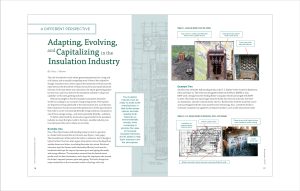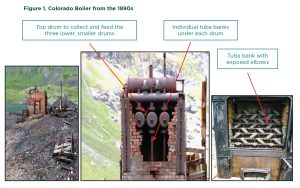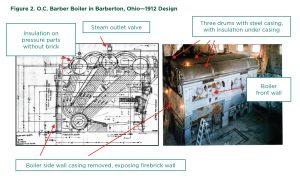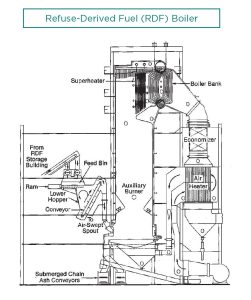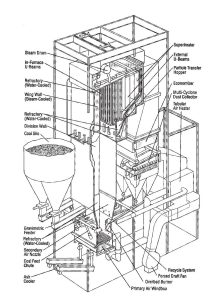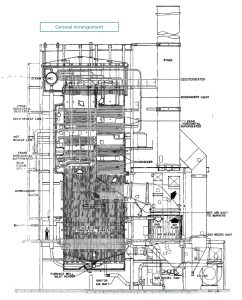A Different Perspective: Adapting, Evolving, and Capitalizing in the Insulation Industry
The role of insulation in the steam-generating industry has a long and rich history, and an equally compelling story of how it has adapted to change. Insulation was used to support the industrial revolution (in the early 1800s), with the advent of steam locomotives and small industrial factories. In the late 1800s and early 1900s, the steam-generating industry was born, and it was time for the insulation industry to adapt and capitalize on this new, growing industry.
History has taught us that the insulation and power industries evolved according to our country’s rising energy needs. Power plants are depicted as being unfriendly to the environment; but, in all fairness, their reputation should resound with optimism for all the opportunities that exist to create economically friendly energy solutions. Insulation is one of those energy-saving—and environmentally friendly—solutions.
To better understand the tremendous opportunity for the insulation industry, we must first give credit to the basic, sensible industry practices that paved the way to where we are today.
Example One
One of the oldest boilers still standing today, but not in operation, is a boiler built around 1890 in Colorado (see Figure 1, next page). The manufacturer of this particular boiler is unknown, but its design is typical in that it had one main upper drum (water source) feeding three smaller drums and tubes, circulating the water into steam. Brick and refractory kept the furnace walls thermally efficient, but it was the insulation that kept the exposed pressure parts and piping thermally and energy efficient. The insulation ensured that the heated steam would reach its final destination, and it kept the employees safe around the boiler’s exposed pressure parts and piping. The boiler design has many similarities to the locomotive boiler technology of its day.
Example Two
Another very old boiler still standing today is the O. C. Barber1 boiler located in Barberton, Ohio (see Figure 2). The boiler was designed by Babcock & Wilcox (B&W) in 1912. B&W used a design from the Stirling Boiler Company,2 which had merged with B&W in 1907. This boiler was much larger than the boiler discovered in Colorado, but there are similarities. Like the Colorado boiler, the O.C. Barber boiler used the local fuel source and was designed with the more modern boiler technology. Also, as with the boiler in Colorado, insulation was applied to all exposed surfaces, such as the steam drum heads and steam piping located outside the brick wall construction.
Relevance of Examples to Today’s Boilers
The two boilers described in Examples One and Two were not very large in size or capacity compared to today’s boilers, but they had a lot of similarities that the boiler and insulation industry should note. What makes these boilers so relevant to today’s industries? Historically, the increase in boilers being designed and built in the new and expanding boiler industry meant that the insulation industry had to adapt to a new market for their existing products (hard block and pipe insulation) and at the same time develop new products to meet the needs of this rapidly growing industry (mineral wool boards and blankets).
Similar boilers were being built all across America’s cities and towns to generate electricity for the local areas. The power-generating industry was in the beginning stages of defining itself, and rapidly growing, as the insulation industry was adapting/evolving/capitalizing.
Big Changes
Many are forecasting big changes in the industries that the insulation industry supports (power and foundry) over the next 10 years in the United States. It is expected that four to six boilers will be constructed, as well as the refurbishing and conversion of existing boilers to operate using alternative, environmentally safe fuels. In the foundry industry, an increase of 10 to 20% in plant expansion is expected. All these developments will increase insulation sales. So, what to do?
The insulation industry must be ready to assist boiler manufactures in their boiler design options and help redefine both industries as environmentally friendly, while continuing to promote the value of increased insulation thickness (especially on boiler walls that have space available behind the buckstays) and its ability to help lower emissions into the atmosphere.
Here are some already existing boiler designs that could be designated as “green boilers.”
Biopower or Biomass
This boiler design uses refuse and/or biomass as a fuel source, such as residues from wood, pulp and paper, and trees. These designs have been around since the late 1960s to early 1970s and can produce approximately 100 megawatts of electricity (equivalent to 50 wind towers). Typical boilers of this design3 have as much as 20,000 square feet of mineral wool boards meeting ASTM C612 type IVB, blanket type insulation meeting ASTM C592 type II, and more than 12,000 linear feet of small and large bore piping that will require pipe insulation and jacketing.
Clean Coal
This boiler design uses liquid droplets of coal that fall onto the furnace floor to be burned (fluidized bed) or suspended above the furnace floor with air (bubbling bed) and then burned. This clean coal-fired boiler design has been around since the late 1980s and can produce almost 300 megawatts of electricity (approximately 150 wind towers). A typical boiler of this design could have as much as 100,000 square feet of insulation—usually mineral wool board meeting ASTM C6122 type IVB—and more than 7,000 linear feet of small and large bore piping requiring pipe insulation and jacketing.
Gas and Oil
This boiler design uses natural gas and oil, and can be the largest of the non-coal-fired boiler designs. Sometimes referred to as a one-pass, this boiler design has been around since the mid 1960s and can produce almost 300 megawatts of electricity (approximately 150 wind towers). A typical boiler of this design (e.g., B&W RBE boiler design4) could have as much as 25,000 square feet of board and blanket insulation, and more than 5,000 linear feet of pipe insulation and jacketing.
Energy Solutions
The insulation industry has always had energy savings and solutions in its history. R.L. Schneider, a pioneer in heat transfer calculations for Owens-Corning, wrote “…since it is harder to keep improving insulation by decreasing the K (thermal conductivity), let’s increase the thickness when necessary.”5 Even if Schneider was talking about the difficulty of increasing the K-value of insulation, I am sure it laid the ground work for future pioneers such as J.F. Malloy, author of Thermal Insulation6 (1969), regarded as one of the most creative minds in the field of insulation. Malloy wrote, “The greater the cost of insulation the smaller the cost of heat loss.” What Malloy was saying is that you will be saving on heat loss because the insulation thickness has been increased, and thus will save energy.
Throughout history, the insulation industry has always adapted to the needs of the industries it supports. Pioneers in the industry had to evolve, developing new products to meet hotter operating systems. The industry capitalized on the increase in new power plants being built. This trend and resilience of the insulation industry has been going on since the late 1890s and will continue into the future. Now is the time for the insulation industry to redefine itself as the economical and cost-efficient energy industry!
References and Notes
The information in this article has been primarily obtained from public sources, without input from any of the boiler manufacturing companies directly. Sources include:
1. O.C. Barber boiler pictures provided by the Barberton Historical Society
2. Babcock & Wilcox, A Corporate History, Carlisle Printing Company, N.W. Eft (1999)
3. Combustion Fossil Power, Combustion Engineering, Inc. 4th Edition (1991)
4. Steam: Its Generation and Use, 40th Edition; Babcock & Wilcox Company (1992)
5. Fundamental Heat Transfer, R.L. Schneider (1961)
6. Thermal Insulation, Reinhold Book Corporation, John F. Malloy (1969)

